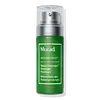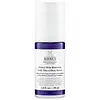What's inside
What's inside
 Key Ingredients
Key Ingredients

 Benefits
Benefits

 Concerns
Concerns

 Ingredients Side-by-side
Ingredients Side-by-side

Water
Skin ConditioningCaprylic/Capric Triglyceride
MaskingC10-18 Triglycerides
EmollientGlycerin
HumectantButyrospermum Parkii Butter
Skin ConditioningHelianthus Annuus Seed Wax
Skin ConditioningPolyacrylate Crosspolymer-6
Emulsion StabilisingJojoba Esters
EmollientGlyceryl Stearates
EmollientCetearyl Alcohol
EmollientRetinal
Skin ConditioningAvena Sativa Kernel Extract
AbrasiveGentiana Lutea Root Extract
Skin ConditioningTetrapeptide-1
Skin ConditioningUrea
BufferingYeast Amino Acids
HumectantTrehalose
HumectantInositol
HumectantTaurine
BufferingBetaine
HumectantSimmondsia Chinensis Seed Oil
EmollientHydroxyacetophenone
AntioxidantTocopherol
AntioxidantAscorbyl Palmitate
AntioxidantPhosphatidylcholine
EmulsifyingMannitol
HumectantCetyl Alcohol
EmollientStearyl Alcohol
EmollientEthylhexylglycerin
Skin ConditioningPropanediol
SolventPolyglycerin-3
HumectantSodium Stearoyl Glutamate
CleansingXanthan Gum
EmulsifyingCaprylyl Glycol
EmollientSodium Chloride
MaskingLeuconostoc/Radish Root Ferment Filtrate
AntimicrobialTetrasodium Glutamate Diacetate
Citric Acid
BufferingChlorphenesin
AntimicrobialPotassium Sorbate
PreservativeSodium Benzoate
MaskingWater, Caprylic/Capric Triglyceride, C10-18 Triglycerides, Glycerin, Butyrospermum Parkii Butter, Helianthus Annuus Seed Wax, Polyacrylate Crosspolymer-6, Jojoba Esters, Glyceryl Stearates, Cetearyl Alcohol, Retinal, Avena Sativa Kernel Extract, Gentiana Lutea Root Extract, Tetrapeptide-1, Urea, Yeast Amino Acids, Trehalose, Inositol, Taurine, Betaine, Simmondsia Chinensis Seed Oil, Hydroxyacetophenone, Tocopherol, Ascorbyl Palmitate, Phosphatidylcholine, Mannitol, Cetyl Alcohol, Stearyl Alcohol, Ethylhexylglycerin, Propanediol, Polyglycerin-3, Sodium Stearoyl Glutamate, Xanthan Gum, Caprylyl Glycol, Sodium Chloride, Leuconostoc/Radish Root Ferment Filtrate, Tetrasodium Glutamate Diacetate, Citric Acid, Chlorphenesin, Potassium Sorbate, Sodium Benzoate
Water
Skin ConditioningGlycerin
HumectantButylene Glycol
HumectantPentylene Glycol
Skin ConditioningNiacinamide
SmoothingCetyl Alcohol
EmollientIsohexadecane
EmollientIsononyl Isononanoate
EmollientDiisopropyl Sebacate
Emollient2-Oleamido-1,3-Octadecanediol
Skin Conditioning4-T-Butylcyclohexanol
MaskingAcetyl Dipeptide-1 Cetyl Ester
Skin ConditioningAdenosine
Skin ConditioningCeramide NP
Skin ConditioningHydroxypalmitoyl Sphinganine
Skin ConditioningLauroyl Lysine
Skin ConditioningOctyldodecanol
EmollientPentaerythrityl Tetra-Di-T-Butyl Hydroxyhydrocinnamate
AntioxidantSodium Chloride
MaskingSodium Hyaluronate
HumectantSodium Hydroxide
BufferingTrisodium Ethylenediamine Disuccinate
Retinol
Skin ConditioningTocopherol
AntioxidantDicaprylyl Ether
EmollientAmmonium Polyacryloyldimethyl Taurate
Emulsion StabilisingBehenyl Alcohol
EmollientCaprylyl Glycol
EmollientCarbomer
Emulsion StabilisingCetearyl Alcohol
EmollientCetearyl Glucoside
EmulsifyingGlycine Soja Oil
EmollientHelianthus Annuus Seed Oil
EmollientHydroxyethylcellulose
Emulsion StabilisingLecithin
EmollientPhenethyl Alcohol
MaskingPoloxamer 188
EmulsifyingPolycaprolactone
StabilisingSorbitan Laurate
EmulsifyingSteareth-100
Gel FormingCI 40800
Cosmetic ColorantChlorphenesin
AntimicrobialPhenoxyethanol
PreservativeWater, Glycerin, Butylene Glycol, Pentylene Glycol, Niacinamide, Cetyl Alcohol, Isohexadecane, Isononyl Isononanoate, Diisopropyl Sebacate, 2-Oleamido-1,3-Octadecanediol, 4-T-Butylcyclohexanol, Acetyl Dipeptide-1 Cetyl Ester, Adenosine, Ceramide NP, Hydroxypalmitoyl Sphinganine, Lauroyl Lysine, Octyldodecanol, Pentaerythrityl Tetra-Di-T-Butyl Hydroxyhydrocinnamate, Sodium Chloride, Sodium Hyaluronate, Sodium Hydroxide, Trisodium Ethylenediamine Disuccinate, Retinol, Tocopherol, Dicaprylyl Ether, Ammonium Polyacryloyldimethyl Taurate, Behenyl Alcohol, Caprylyl Glycol, Carbomer, Cetearyl Alcohol, Cetearyl Glucoside, Glycine Soja Oil, Helianthus Annuus Seed Oil, Hydroxyethylcellulose, Lecithin, Phenethyl Alcohol, Poloxamer 188, Polycaprolactone, Sorbitan Laurate, Steareth-100, CI 40800, Chlorphenesin, Phenoxyethanol
 Reviews
Reviews

Ingredients Explained
These ingredients are found in both products.
Ingredients higher up in an ingredient list are typically present in a larger amount.
Caprylyl Glycol is a humectant and emollient, meaning it attracts and preserves moisture.
It is a common ingredient in many products, especially those designed to hydrate skin. The primary benefits are retaining moisture, skin softening, and promoting a healthy skin barrier.
Though Caprylyl Glycol is an alcohol derived from fatty acids, it is not the kind that can dry out skin.
This ingredient is also used as a preservative to extend the life of products. It has slight antimicrobial properties.
Learn more about Caprylyl GlycolCetearyl alcohol is a mixture of two fatty alcohols: cetyl alcohol and stearyl alcohol. It is mainly used as an emulsifier. Emulsifiers help prevent the separation of oils and products. Due to its composition, it can also be used to thicken a product or help create foam.
Cetearyl alcohol is an emollient. Emollients help soothe and hydrate the skin by trapping moisture.
Studies show Cetearyl alcohol is non-toxic and non-irritating. The FDA allows products labeled "alcohol-free" to have fatty alcohols.
This ingredient is usually derived from plant oils such as palm, vegetable, or coconut oils. There is debate on whether this ingredient will cause acne.
Due to the fatty acid base, this ingredient may not be Malassezia folliculitis safe.
Learn more about Cetearyl AlcoholCetyl Alcohol is a fatty alcohol. Fatty Alcohols are most often used as an emollient or to thicken a product.
Its main roles are:
Though it has "alcohol" in the name, it is not related to denatured alcohol or ethyl alcohol.
The FDA allows products labeled "alcohol-free" to have fatty alcohols.
Learn more about Cetyl AlcoholChlorphenesin is a synthetic preservative. It helps protect a product against bacteria in order to extend shelf life. In most cases, Chlorphenesin is paired with other preservatives such as phenoxyethanol and caprylyl glycol.
Chlorphenesin is a biocide. This means it is able to help fight the microorganisms on our skin. It is also able to fight odor-releasing bacteria.
Chlorphenesin is soluble in both water and glycerin.
Studies show Chlorphenesin is easily absorbed by our skin. You should speak with a skincare professional if you have concerns about using Chlorphenesin.
Learn more about ChlorphenesinGlycerin is already naturally found in your skin. It helps moisturize and protect your skin.
A study from 2016 found glycerin to be more effective as a humectant than AHAs and hyaluronic acid.
As a humectant, it helps the skin stay hydrated by pulling moisture to your skin. The low molecular weight of glycerin allows it to pull moisture into the deeper layers of your skin.
Hydrated skin improves your skin barrier; Your skin barrier helps protect against irritants and bacteria.
Glycerin has also been found to have antimicrobial and antiviral properties. Due to these properties, glycerin is often used in wound and burn treatments.
In cosmetics, glycerin is usually derived from plants such as soybean or palm. However, it can also be sourced from animals, such as tallow or animal fat.
This ingredient is organic, colorless, odorless, and non-toxic.
Glycerin is the name for this ingredient in American English. British English uses Glycerol/Glycerine.
Learn more about GlycerinChances are, you eat sodium chloride every day. Sodium Chloride is also known as table salt.
This ingredient has many purposes in skincare: thickener, emulsifier, and exfoliator.
You'll most likely find this ingredient in cleansers where it is used to create a gel-like texture. As an emulsifier, it also prevents ingredients from separating.
There is much debate on whether this ingredient is comedogenic. The short answer - comedogenic ratings don't tell the whole story. Learn more about comegodenic ratings here.
The concensus about this ingredient causing acne seems to be divided. Research is needed to understand if this ingredient does cause acne.
Scrubs may use salt as the primary exfoliating ingredient.
Learn more about Sodium ChlorideTocopherol (also known as Vitamin E) is a common antioxidant used to help protect the skin from free-radicals and strengthen the skin barrier. It's also fat soluble - this means our skin is great at absorbing it.
Vitamin E also helps keep your natural skin lipids healthy. Your lipid skin barrier naturally consists of lipids, ceramides, and fatty acids. Vitamin E offers extra protection for your skin’s lipid barrier, keeping your skin healthy and nourished.
Another benefit is a bit of UV protection. Vitamin E helps reduce the damage caused by UVB rays. (It should not replace your sunscreen). Combining it with Vitamin C can decrease sunburned cells and hyperpigmentation after UV exposure.
You might have noticed Vitamin E + C often paired together. This is because it is great at stabilizing Vitamin C. Using the two together helps increase the effectiveness of both ingredients.
There are often claims that Vitamin E can reduce/prevent scarring, but these claims haven't been confirmed by scientific research.
Learn more about TocopherolWater. It's the most common cosmetic ingredient of all. You'll usually see it at the top of ingredient lists, meaning that it makes up the largest part of the product.
So why is it so popular? Water most often acts as a solvent - this means that it helps dissolve other ingredients into the formulation.
You'll also recognize water as that liquid we all need to stay alive. If you see this, drink a glass of water. Stay hydrated!
Learn more about Water